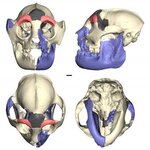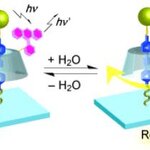Technology

The field of robotics makes consistent progress but the great success of so far has been in automating repetitive tasks in process control and assembly, yielding dramatic cuts in production.
The next step - towards cognition and more human-like behavior - remains elusive. It has been difficult to make robots that can truly learn and adapt to unexpected situations in the way humans can, while it has been equally challenging trying to develop a machine capable of moving smoothly like any animal. There is still no robot capable of walking properly without jerky slightly unbalanced movements.
A…

Supported by the European Commission 7th Framework Programme of Information Society Technologies, the euroFOT integrated project launched in May and led by Ford involves 28 partners including major European vehicle manufacturers as well as leading automotive technology suppliers and research institutes and will be conducted over a period of 40 months.
The partners will conduct European-wide vehicle field tests, to assess the impact of eight advanced driver assistance and preventive safety functions in real traffic conditions.
8 functionalities will be tested in over 1500 vehicles from 11…

Researchers have created a 3D image of a material referred to as "liquid smoke." Aerogel, also known as liquid smoke or "San Francisco fog," is an open-cell polymer with pores smaller than 50 nanometers in diameter.
Aerogel is a form of nanofoam, an engineered material designed for high strengh-to-weight ratio. Such nanofoam structires are also present in the fields of geology, phospholipids, cells, bone structure, polymers and structural materials, wherever lightness and strength are needed.
For the first time, Lawrence Livermore and Lawrence Berkeley scientists have peered into this…

Penn State researchers have used computed tomography (CT) technology to virtually glue newly-discovered skull fragments of a rare extinct lemur back into its partial skull, which was discovered over a century ago. Alan Walker, Evan Pugh Professor of Anthropology and Biology at Penn State, and Research Associate in Anthropology Timothy Ryan, led the research.
The different fragments of this lemur's skull are separated by thousands of miles, with the partial skull in Vienna and the pieces of frontal bone in the United States. The result of the digital manipulation is a nearly complete skull of…

Knowledge of the structure–property–function relationships of dermal scales of armoured fish could enable pathways to improved bioinspired human body armor, and may provide clues to the evolutionary origins of mineralized tissues.
Writing in Nature Materials, researchers Benjamin J. F. Bruet, Juha Song, Mary C. Boyce and Christine Ortiz present a multiscale experimental and computational approach that reveals the materials design principles present within individual ganoid scales from the 'living fossil' Polypterus senegalus.
This fish belongs to the ancient family Polypteridae, which first…

SENSOPAC, an EU-funded project whose goal is to create a robotic arm, hand and brain with human-like physical and cognitive capabilities, is bringing human-like robots closer to reality - their newest electronic brain is modelled on the human cerebellum.
Existing robots, such as those that help assemble cars or computers, can perform repetitive actions quickly and precisely. However, says Patrick van der Smagt, the coordinator of SENSOPAC, “they are not very intelligent or flexible and they don’t do very much sensing.”
While the movies have convinced many people that humanoid robots, such as…

Elvira Fortunato and colleagues from the Centro de Investigação de Materiais (Cenimat/I3N), at Faculdade de Ciências e Tecnologia, Universidade Nova de Lisboa, made the first Field Effect Transistor (FET) with a paper «interstrate» layer.
There is an increased interest in the use of biopolymers for low-cost electronic applications. Since cellulose is the Earth’s major biopolymer, some international teams have reported using paper as the physical support (substrate) of electronic devices but no one had used paper as an interstrate component of a FET.
The electrical performance of the new…

A new technology that spots tooth decay almost as soon as it’s begun promises to reduce the need for drilling and filling, writes Patrick Walter in SCI’s Chemistry & Industry (C&I) magazine.
Drilling is one of the top dental phobias and puts thousands of people off visiting their dentist every year.
The new technology, which may be available in dental surgeries in five years from now, is based on Raman spectroscopy most commonly used to distinguish between different chemicals by identifying each molecule’s unique fingerprint. It detects decay simply and painlessly by pointing a tiny…

Humans have long been trying to make the dream of nanoscopic robots come true. It's getting closer each time nanoscience produces components for molecular-scale machines.
One such device is a rotor; a movable component that rotates around an axis. Trying to observe such rotational motion on the molecular scale is an extremely difficult undertaking but Japanese researchers at the Universities of Osaka and Kyoto have met this challenge. As Akira Harada and his team report in the journal Angewandte Chemie, they were able to get "snapshots" of individual molecular rotors caught in motion.
As…

A super-resolution X-ray microscope developed by a team of researchers from the Paul Scherrer Institut (PSI) and EPFL in Switzerland combines the high penetration power of x-rays with high spatial resolution, making it possible for the first time to shed light on the detailed interior composition of semiconductor devices and cellular structures.
The new instrument uses a Megapixel Pilatus detector (whose big brother will be detecting collisions from CERN's Large Hadron Collider), which has excited the synchrotron community for its ability to count millions of single x-ray photons over a…